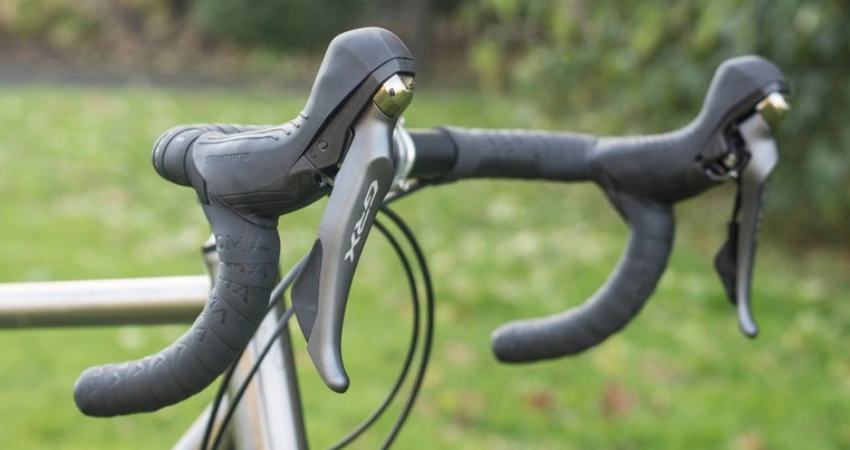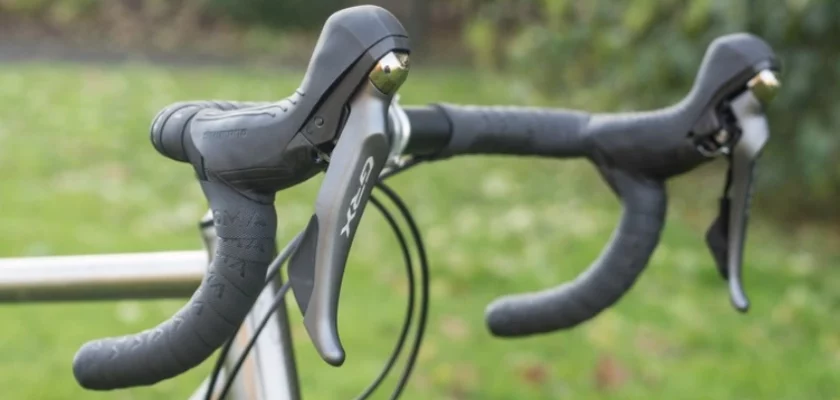Shifting gears on a vintage road bike can be a bit different compared to modern bikes, but with a few tips and tricks, you’ll be smoothly transitioning between gears in no time.
Whether you’re new to cycling or just looking to fine-tune your shifting skills, this guide will provide you with valuable insights on how to shift gears on a vintage road bike. So, grab your vintage road bike, and let’s dive into the wonderful world of gear shifting!
Master Vintage Road Bike Gears: Shift Smoothly

Shifting gears on a vintage road bike can be a bit different from modern bikes, but with a little practice and understanding, you can easily master this skill. Whether you’re a beginner or a seasoned cyclist, knowing how to shift gears properly can enhance your riding experience and make your vintage road bike feel like new.
Gear Terminology
Understanding the terminology related to gears is essential before we dive into the details of shifting. Let’s familiarize ourselves with some common gear-related terms:
1. Cassette: The cassette is the cluster of gears located on the rear wheel hub. Vintage road bikes typically have a freewheel cassette, which means the gear cluster turns independently of the hub.
2. Chainrings: Chainrings are the front gears attached to the crankset. Vintage road bikes typically have two or three chainrings.
3. Derailleurs: Derailleurs are the mechanisms responsible for moving the chain between different gears. Vintage road bikes usually have both front and rear derailleurs.
4. Shifters: Shifters are the levers that control the derailleurs, allowing you to move the chain from one gear to another.
Shifting Technique
Now that we are familiar with the gear terminology, let’s explore the step-by-step process of shifting gears on a vintage road bike:
1. Selecting the chainring: Start by selecting the appropriate chainring. For most road bikes, the larger chainring is used on flatter terrain and for faster speeds, while the smaller chainring is used for climbing hills or riding at slower speeds. Choose the chainring that suits your current riding conditions.
2. Choosing the rear gear: Once you have selected the desired chainring, you can now choose the rear gear. Larger rear gears provide an easier (lower) gear ratio, ideal for uphill climbing or riding in challenging conditions.
Conversely, smaller rear gears offer a harder (higher) gear ratio, which allows for faster speeds on flat terrain or downhill. Adjust the rear gear based on your current riding needs.
3. Anticipate gear changes: As you ride, anticipate gear changes by monitoring the road conditions and terrain ahead. Plan your shifts in advance, rather than shifting abruptly when faced with difficult conditions or sudden changes in gradient.
4. Shift smoothly and rhythmically: When you’re ready to shift, gently apply pressure to the corresponding shifter lever. Vintage road bikes often have downtube or handlebar-mounted shifters. Shift one gear at a time, allowing the chain to move smoothly from one gear to the next. Avoid sudden or forceful movements, as this can cause the chain to jump or shift poorly.
5. Coordinate front and rear shifts: When changing gear on your vintage road bike, it’s essential to coordinate the shifting of both the front and rear derailleurs. For example, when shifting to a larger chainring, simultaneously shift to a smaller rear gear, and vice versa. Coordinating these shifts ensures a smoother transition and reduces the risk of chain misalignment.
Common Shifting Problems
While shifting gears on a vintage road bike is usually a smooth process when done correctly, there can be some common issues that you may encounter. Here are a few problems and their potential solutions:
1. Chain skipping: If your chain skips or jumps between gears when shifting, it may indicate a worn chain or cassette. Consider replacing the worn-out components to ensure accurate and reliable gear shifting.
2. Chain rubbing: If you notice your chain rubbing against the front derailleur, it means the alignment is off. Make slight adjustments to the front derailleur’s position using the barrel adjuster until the chain no longer rubs.
3. Chain dropping: A chain dropping off the chainrings can happen due to an improperly adjusted front derailleur. You may need to adjust the high or low limit screws of the front derailleur for proper alignment and chain retention.
Practice and Maintenance
To become proficient in shifting gears on your vintage road bike, practice is key. Spend some time on different terrains, experimenting with various gear combinations and observing how each gear feels. Through practice, you will develop a sense of which gears work best for different riding conditions.
Additionally, regular maintenance is crucial for ensuring smooth gear shifting performance on your vintage road bike. Keep the drivetrain clean and lubricated, regularly inspect the cables for any signs of wear, and fine-tune the gear shifting mechanisms as needed. A well-maintained bike will reward you with reliable shifting and an enjoyable riding experience.
Frequently Asked Questions
1. How do I shift gears on a vintage road bike?
To shift gears on a vintage road bike, you need to use the shift levers located on the downtube of the frame. Move the lever forward to shift into a harder gear and backward to shift into an easier gear.
2. What should I do if the gears are not shifting smoothly?
If the gears on your vintage road bike are not shifting smoothly, you can try adjusting the barrel adjuster on the derailleur or lubricating the chain. If the problem persists, it might be necessary to have a professional bike mechanic inspect and adjust the gears.
3. Can I shift gears while pedaling?
Yes, you can shift gears on a vintage road bike while pedaling. However, it is recommended to ease off on the pressure on the pedals slightly when shifting to minimize stress on the drivetrain and ensure smoother gear changes.
4. How can I prevent the chain from slipping during gear shifts?
To prevent the chain from slipping during gear shifts on a vintage road bike, ensure that the derailleur limits are properly adjusted and that the chain is properly tensioned. Also, avoid shifting gears under heavy load or while climbing steep hills.
5. Why does the chain sometimes drop to a smaller chainring?
The chain on a vintage road bike may occasionally drop to a smaller chainring due to inadequate front derailleur adjustment, a worn chain, or an issue with the chainrings themselves. To avoid this, make sure the front derailleur is properly aligned and the chain is in good condition.
Final Thoughts
In conclusion, mastering the art of shifting gears on a vintage road bike is key to optimizing your riding experience. By understanding the intricacies of your bike’s gear system, you can effortlessly navigate different terrains, maintain your speed, and prevent unnecessary strain on your muscles.
Remember to familiarize yourself with the gear levers, practice shifting smoothly and pre-emptively, and always be mindful of the terrain ahead.
With patience and practice, you can ride with confidence, enjoying the freedom and joy that a vintage road bike can bring. So, next time you hop on your trusty vintage road bike, don’t forget to apply these tips on how to shift gears and enjoy the ride!

